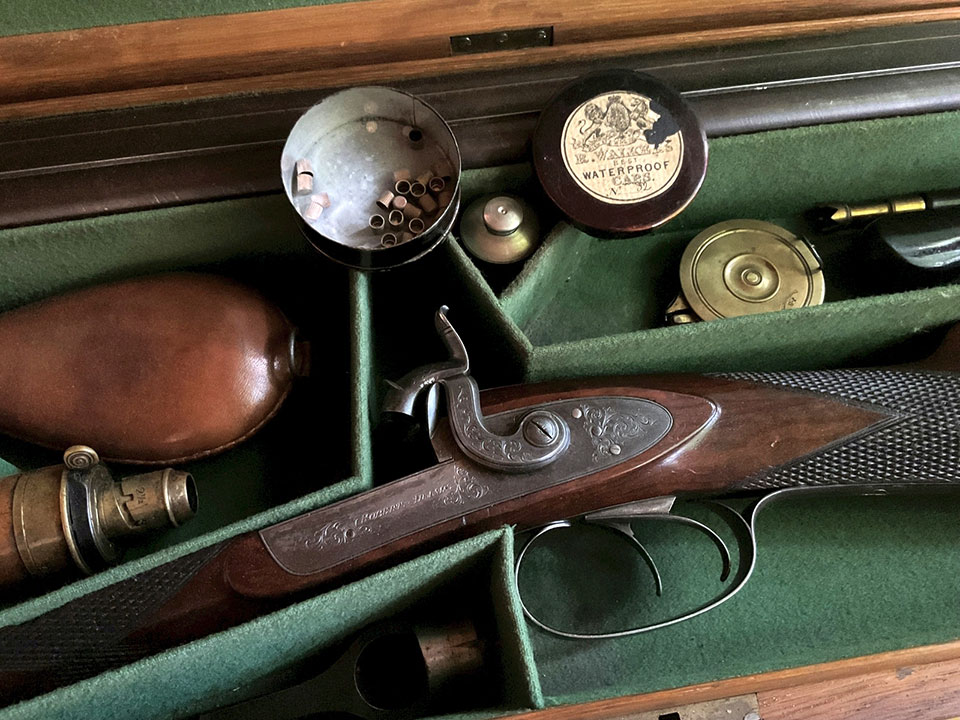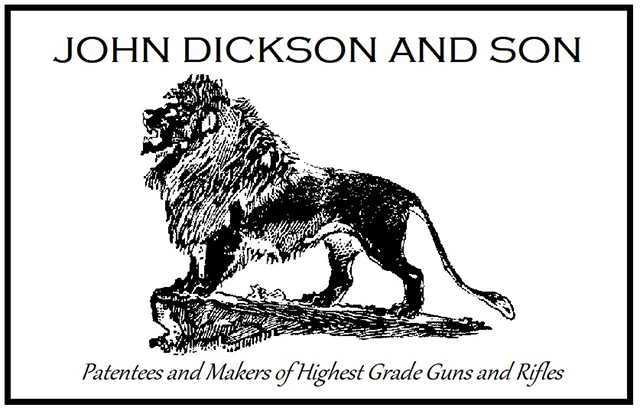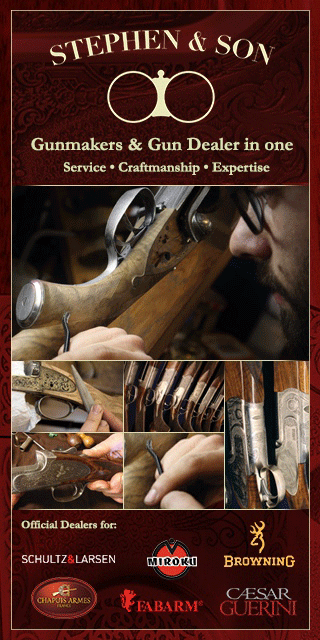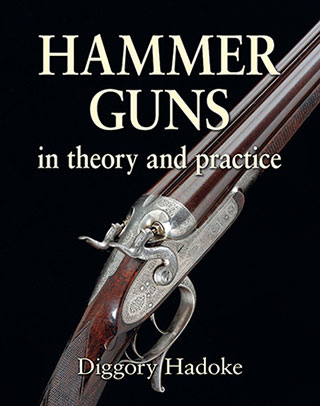The change from the flintlock to the percussion lock, or, more precisely, the switch from friction-based ignition to chemical-based ignition, was a momentous milestone in the history of firearms.
The violently explosive properties of metal fulminates had been known for some time. Samuel Pepys’s diary entry for 11 November 1663 refers to the explosive qualities of ‘Aurum fulminans,’ or fulminating gold. The discovery of this highly volatile substance (gold hydrazide) is attributed to Johann Thölde, writing under the pseudonym Basilius Valentinus, published in 1599.
In 1786 the French chemist Claude Louis Berthollet was the first to produce potassium chlorate, or Berthollet’s Salt, while researching dyes and bleaches. In 1788 he was also the first to produce fulminating silver, or silver nitride. Then, the eminent British chemist Edward Charles Howard published his discoveries concerning mercury fulminate in the Philosophical Transactions of the Royal Society of London on 1 January 1800, the year after being elected a Fellow of the Society.

For his work, he was awarded the prestigious Copley medal (previous medal winners included Benjamin Franklin, James Cook, William Herschel and Alessandro Volta). Howard found that when mercury was treated with nitric acid and alcohol, it produced a whitish crystallized powder with properties similar to gunpowder, which could be detonated with a sharp blow or an electric current.
the effect was similar to what would have been achieved with half a typical charge of gunpowder
In his paper, Howard described testing the fulminate in a hand-held device used to test the strength of gunpowder. Satisfied his ‘mercurial powder’ had promise, Howard continued his testing. He loaded a gun with 17 grains of the fulminate and a lead bullet and fired at a block of wood some twenty feet distant.
Howard didn’t notice much of a bang or recoil. From the resulting dent in the wood, the effect was similar to what would have been achieved with half a typical charge of gunpowder (about 68 grains). Howard reloaded the gun with 34 grains of fulminate but was met with a different result: the patent breech was torn open, the gold touch-hole driven out, and the barrel had a three-inch crack from the breech.
Howard surmised: “...it was pretty plain that no gun could confine a quantity of the mercurial powder sufficient to project a bullet, with a greater force than an ordinary charge of gunpowder.”
In a final relevant test, Howard was permitted by the Right Honourable Lord Howe, Lieutenant General of the Ordnance, to test the ‘mercurial powder’ at the Royal Laboratory of the Royal Arsenal at Woolwich. This testing resulted in the destruction of several cannon (!), with Howard concluding: “...any piece of ordnance might be destroyed, by employing a quantity of the mercurial powder equal in weight to one half of the service charge of gunpowder.”
While using fulminates as the main propellant was clearly out of the question, using fulminates to ignite a charge of gunpowder was considered another option. However, the Royal Laboratory observed that the fast-burning fulminate would not light gunpowder. Howard repeated the experiment, writing: “...we spread a mixture of coarse and fine grained gunpowder upon a parcel of mercurial powder; and, after the inflammation of the latter, we collected most, if not all, of the grains of gunpowder.”

Howard wondered if the combustion of the fulminate was too rapid or if it did not generate enough heat to ignite the gunpowder. In any case, Howard did not continue the research into fulminates of mercury and firearms – but, thankfully, another curious inventor did.
Based on Howard’s discoveries and convinced he could harness the desirable properties of mercury fulminate, the Reverend Alexander John Forsyth of Belhelvie, Aberdeenshire, Scotland, pursued his research and eventually developed a detonating gun lock in 1805.
It had a priming system that dispensed a mixture of mercury fulminate, potassium chlorate, sulphur and charcoal into a pan. The hammer struck the mixture, and the resultant flame connected to the main charge via a touch-hole.
The characteristic shape of the fulminate-mixture dispenser earned the lock its name, ‘Forsyth’s Scent-bottle,’ and it was patented in 1807. Eventually, numerous gun locks were developed that made use of fulminates in a variety of forms: as crystals or in ball form, in pellets or pastilles, and covered in wax, varnish, lead, or copper to prevent the absorption of moisture and reduce the corrosive effects of potassium chlorate on metal parts.
Joseph Manton’s pill- or pellet-lock was patented in 1816
Among the more successful variants, the London maker Joseph Manton’s pill- or pellet-lock was patented in 1816. Manton also patented a tube lock in 1818, which confined the fulminate to a copper tube crushed by a hammer.
The tube lock became popular with waterfowlers for its strong ignition in wet conditions. Forsyth’s patent expired in 1821, and by then, the percussion cap, a soft copper (or iron) ‘top hat’ containing a small amount of fulminate and which was placed on a nipple, had started to appear.

The precise origins of the percussion cap are obscure (perhaps the still-active Forsyth patent deterred inventors experimenting with fulminate mixtures), and there are several claimants to this important invention. Joshua Shaw, an English-born American painter-inventor living in Philadelphia, patented the percussion cap in America in 1822.
However, the Parisian inventor and gunmaker François Prélat filed a French patent for a percussion cap in 1818, which may have been based on an invention by the London gunmaker Joseph Egg from around 1817.
Deane credits Deboubert and Blanchard of Paris with perfecting the copper cap.
Other claimants to the invention include Joseph Manton, the Parisian Jean-Louis Deboubert, and the renowned sportsman Lieutenant-Colonel Peter Hawker. The percussion cap went through various design and manufacturing improvements over time. John Deane (author of Deane’s Manual of the History and Science of Fire-Arms, 1858) credits Deboubert and Blanchard of Paris with perfecting the copper cap.

However, who was first with the idea may well remain a mystery. By 1830, the external copper percussion cap had become the dominant ignition system in use – all thanks to a British chemist, a Scottish reverend, and several determined inventors.
Stephen Nash
2 September 2022
Published by Vintage Guns Ltd on (modified )



